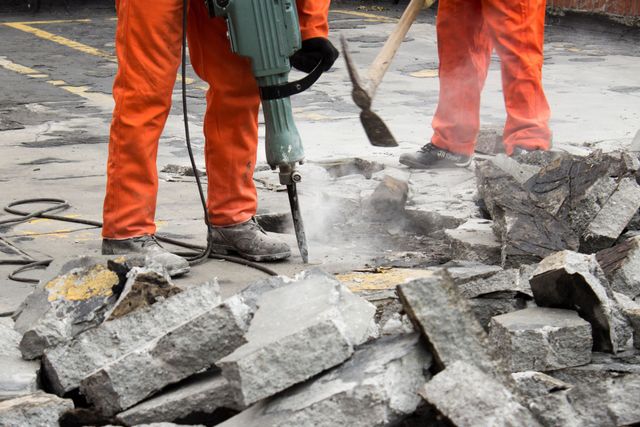Safety First: Why Concrete Scanning is Essential for Preventing Costly Accidents

Construction projects are complex operations that involve various risks, and safety should always be the top priority. One crucial aspect of ensuring safety on a construction site is concrete scanning. Concrete scanning is a non-destructive method used to detect rebar, post-tension cables, and other objects embedded in concrete before drilling, cutting, or coring.
By utilizing advanced technologies such as ground-penetrating radar and electromagnetic induction, concrete scanning helps prevent costly accidents, injuries, and damage to structures.
The Importance of Concrete Scanning
1. Preventing Accidents and Injuries
- Identifying embedded objects such as rebar and post-tension cables helps prevent accidental strikes during drilling or cutting.
- Avoiding accidental hits on electrical conduits or plumbing systems reduces the risk of injuries to workers and minimizes downtime on the construction site.
2. Protecting Structural Integrity
- Accidentally hitting reinforcement bars or tension cables can compromise the structural integrity of the concrete, leading to potential collapses or failures.
- By conducting concrete scanning, construction teams can ensure that structural elements are preserved and not damaged during subsequent construction activities.
The Process of Concrete Scanning
1. Ground-Penetrating Radar (GPR)
GPR uses high-frequency radio waves to detect objects embedded in concrete. The technology provides real-time imaging of subsurface structures, allowing construction teams to visualize the location of rebar, post-tension cables, and other objects.
2. Electromagnetic Induction
Electromagnetic induction is another method used for concrete scanning, particularly for locating metallic objects such as rebar. By inducing an electromagnetic field into the concrete, this technology can identify the presence and location of metallic reinforcements.
The Cost of Accidents in Construction
Accidents and damages in construction can have severe financial implications, affecting both the project budget and timeline. By investing in concrete scanning as a preventive measure, construction companies can avoid the following costly consequences:
- Repair costs for damaged structures or utilities
- Medical expenses and compensation for injured workers
- Project delays due to accidents and investigations
- Lawsuits and legal fees resulting from accidents
Conclusion
Concrete scanning is an essential practice in the construction industry to ensure safety, protect structural integrity, and prevent costly accidents. By utilizing advanced technologies and methods for detecting embedded objects in concrete, construction teams can mitigate risks, enhance project efficiency, and ultimately save on expenses associated with accidents and damages. Prioritizing safety through concrete scanning demonstrates a commitment to quality, professionalism, and responsible construction practices.
